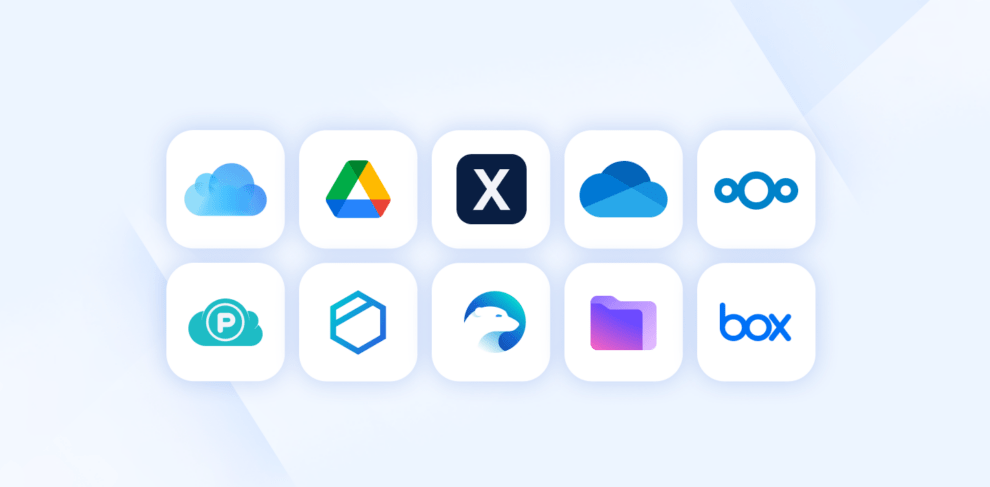As digital lifestyles grow more complex, cloud storage has become an indispensable tool for individuals and businesses alike. Whether it’s safeguarding precious memories, collaborating on work projects, or ensuring data is accessible across devices, cloud storage services have revolutionized how we manage information. With so many options available, choosing the right service can feel overwhelming. To help simplify the decision-making process, we’ve analyzed some of the leading cloud storage providers for 2025, highlighting their strengths, weaknesses, and standout features.
The Rise of Cloud Storage
Cloud storage offers a convenient way to store files securely while freeing up space on personal devices. Instead of relying on physical hardware like external drives, users can upload their data to remote servers managed by cloud providers. This allows access to files from virtually anywhere with an internet connection. Beyond convenience, cloud storage also provides peace of mind—files stored in the cloud are less vulnerable to loss due to device failure, theft, or damage.
For those seeking reliable solutions tailored to their needs, understanding the nuances of each provider is crucial. Below, we explore some of the top contenders in the market, including Google Drive, Microsoft OneDrive, Apple iCloud, Dropbox, and lesser-known alternatives like SugarSync and pCloud.
Google Drive: A Versatile Favorite
Google Drive remains one of the most popular choices for cloud storage, thanks to its seamless integration with other Google services and affordability. Offering 15GB of free storage, it provides ample space for casual users who primarily need to back up photos, documents, and emails. For those requiring more capacity, Google One offers tiered plans starting at $2 per month for 100GB, scaling up to premium tiers that include advanced AI tools through Gemini Advanced chatbot support.
One of Google Drive’s standout qualities is its user-friendly interface, which makes organizing and sharing files straightforward. However, it no longer includes a built-in VPN, which might disappoint privacy-conscious users. Additionally, while business plans cater to organizations of all sizes, enterprise pricing requires contacting sales directly—a potential hurdle for smaller teams.
Microsoft OneDrive: Power Meets Simplicity
Microsoft OneDrive shines as a robust option for Windows users and professionals leveraging Microsoft 365. Its free plan grants 5GB of storage, but where OneDrive truly excels is in its bundled offerings. Subscribers to Microsoft 365 Personal or Family gain access to 1TB or 6TB of storage, respectively, alongside productivity apps like Word, Excel, and PowerPoint.
While these packages offer excellent value, they may overwhelm users seeking standalone storage without additional software. The Basic plan, priced at $2 monthly for 100GB, bridges this gap but lacks the flexibility of mid-tier options. Despite this limitation, OneDrive’s compatibility with multiple operating systems ensures broad accessibility, making it a solid choice for diverse audiences.
Apple iCloud: Seamless Integration for Apple Ecosystem Users
For Apple enthusiasts, iCloud stands out as the go-to solution. With 5GB of free storage included for all Apple device owners, it serves as a natural extension of the ecosystem. Paid upgrades, branded as iCloud Plus, deliver generous allocations ranging from 50GB to 12TB, catering to both light users and power consumers.
iCloud emphasizes privacy and security, offering features like Private Relay, Hide My Email, and HomeKit Secure Video. These perks enhance protection without complicating the user experience. However, creating an account exclusively via iOS could deter non-Apple users, and not everyone utilizes HomeKit integrations, diminishing their appeal for certain subscribers.
Dropbox: Feature-Rich but Pricey
Dropbox has long been synonymous with cloud storage, praised for its clean design and extensive app integrations. Collaborative tools linking platforms like Slack, Asana, and Zoom make it ideal for team environments. Yet, Dropbox’s free tier offers only 2GB of storage—the lowest among major competitors—pushing users toward paid plans sooner.
Priced at $12 per month for 2TB (billed annually), Dropbox Plus delivers substantial capacity but falls short on customization. There’s little differentiation between personal and family plans, leaving users yearning for a middle ground between limited free storage and hefty subscriptions. Still, its cross-platform support across Windows, macOS, Linux, Android, and iOS ensures versatility.
Exploring Alternatives: SugarSync and pCloud
Beyond household names, innovative alternatives like SugarSync and pCloud merit consideration. SugarSync distinguishes itself with secure file-sharing capabilities, even for recipients lacking accounts. Plans start at $7.49 monthly for 100GB, appealing to budget-conscious users. Meanwhile, pCloud offers lifetime subscriptions—an attractive proposition for those wary of recurring fees.
pCloud’s Premium and Ultra plans provide 500GB to 10TB of storage, complemented by optional client-side encryption for heightened security. Business customers benefit from scalable per-user pricing, ensuring adaptability for growing enterprises. Both services prioritize speed, imposing no limits on file sizes or throttling transfer rates.
Key Considerations When Choosing a Provider
Selecting the best cloud storage service hinges on individual priorities. Casual users may find Google Drive or iCloud sufficient, whereas professionals might lean toward Microsoft OneDrive or Dropbox for enhanced collaboration tools. Privacy advocates should weigh encryption protocols and two-factor authentication availability when evaluating providers.
Storage requirements also play a critical role. Students managing essays and presentations won’t need terabytes of space, but photographers or videographers handling large media files will demand higher capacities. Fortunately, most services allow easy upgrades or downgrades, adapting to evolving needs over time.
The landscape of cloud storage continues to evolve, driven by technological advancements and shifting consumer demands. As we move further into 2025, providers must balance affordability, functionality, and security to remain competitive. Whether you’re an individual seeking simplicity or a business prioritizing scalability, there’s a solution tailored to your needs.
Ultimately, the “best” cloud storage service depends on your unique circumstances. By understanding what each provider brings to the table—and recognizing trade-offs—you can make an informed decision that aligns with your goals. In a world increasingly reliant on digital connectivity, investing in the right cloud storage solution ensures your data remains safe, accessible, and ready for whatever comes next.
















Add Comment